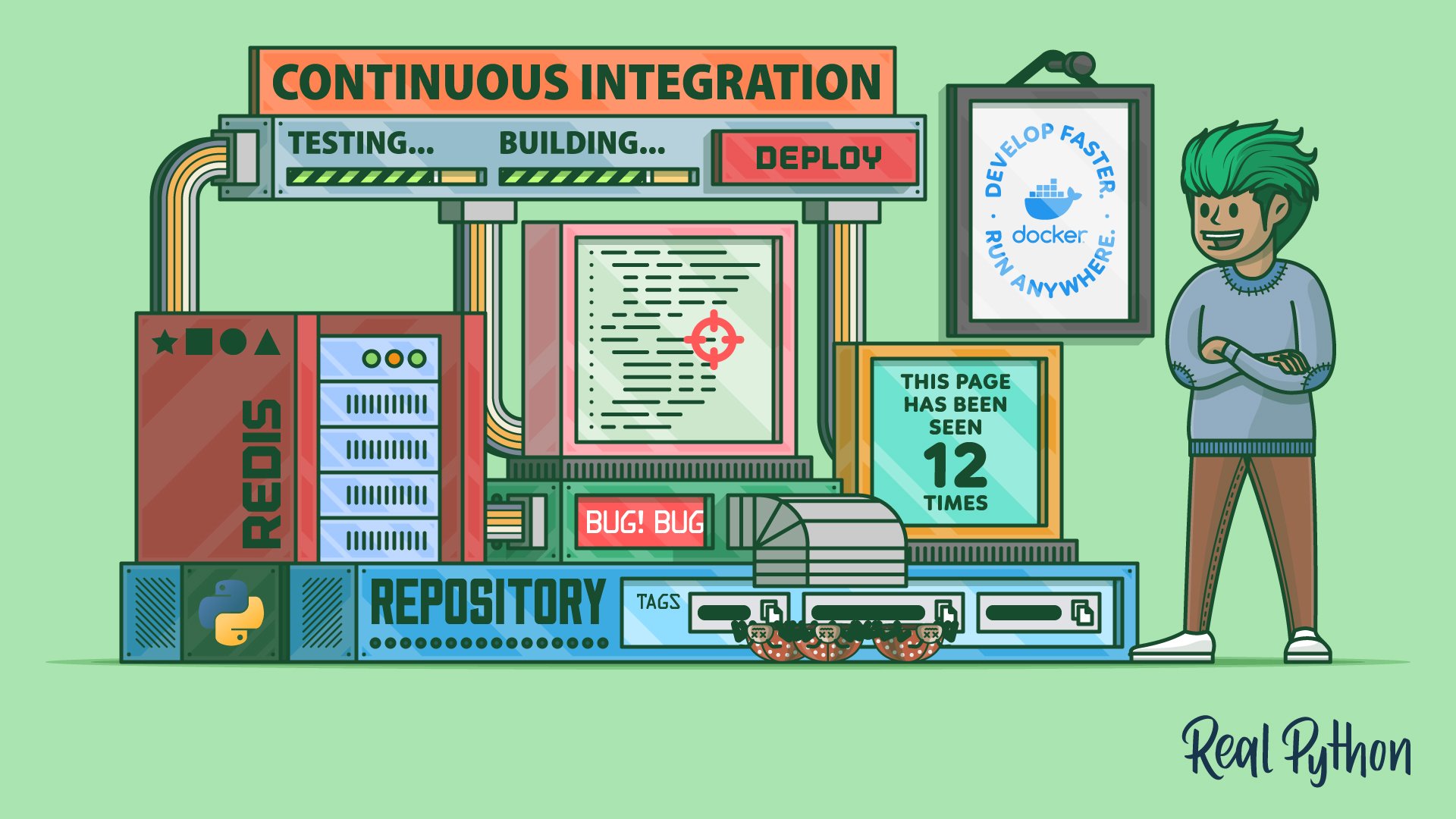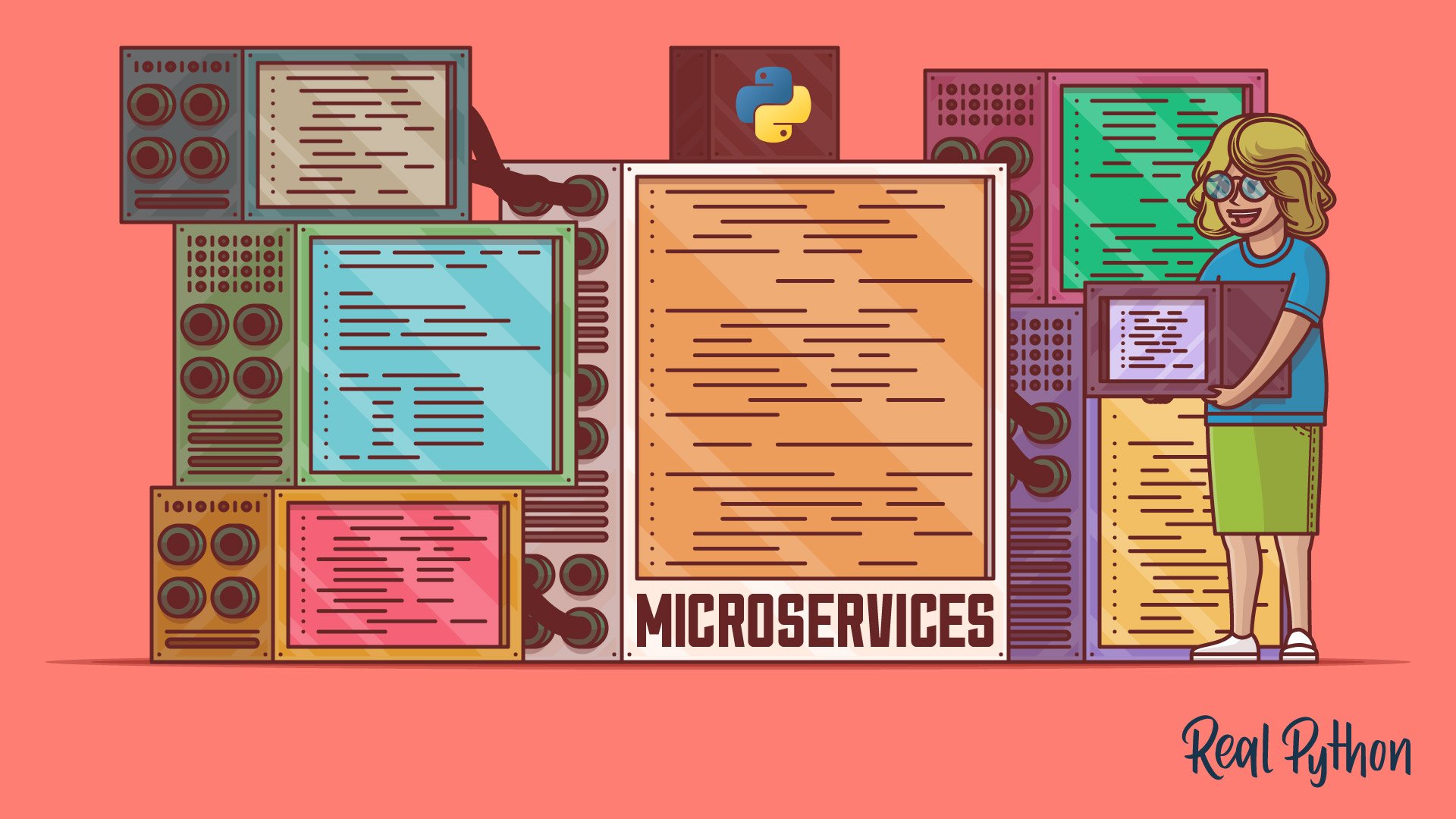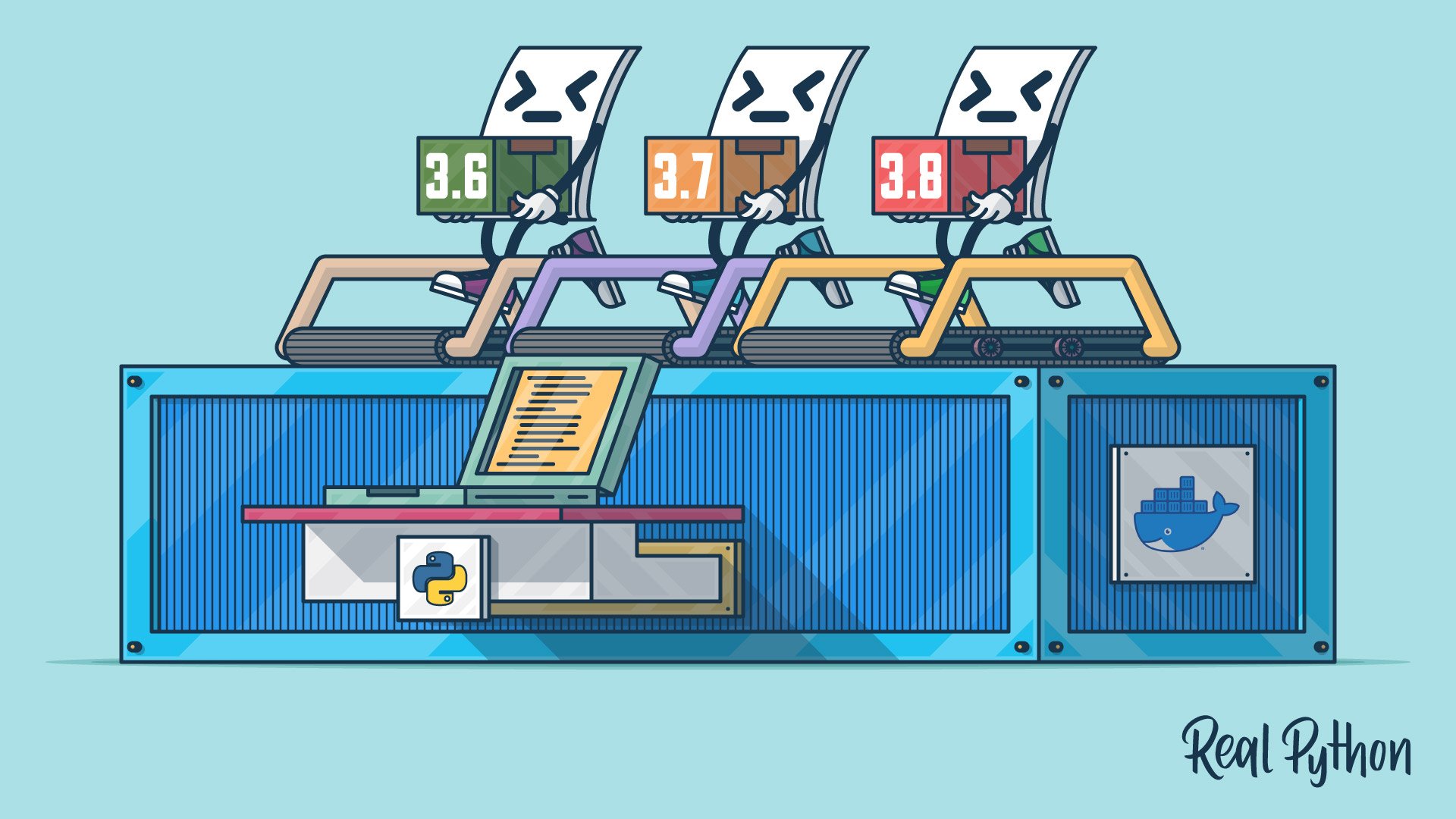Python Docker Tutorials
Use Docker to create reproducible environments and ship Python apps. On this page you’ll find practical guides that show how to write a Dockerfile, manage dependencies, and run your code in containers on macOS, Windows, and Linux.
Free Download: Click here to download your Flask application and related resources so you can define a continuous integration pipeline with Docker.
Learn how to use docker compose for local development, set up volumes and networks, cache builds for speed, and push images to Docker Hub. Explore patterns for testing, multi stage builds, slim images, and security basics like non root users and pinned versions. Start here to containerize your project and deploy it locally or in the cloud.
Browse all resources below, or commit to a guided Learning Path with progress tracking:
Docker lets you package code and dependencies into a portable container that runs the same everywhere.
Create a Dockerfile that installs Python, copies your code, installs dependencies, and sets an entrypoint. Use a slim base image, enable pip cache where possible, and prefer multi stage builds to keep images small.
Use docker compose to run your app with services like Postgres, Redis, or Selenium. Define services, volumes, and networks in a compose file, then run docker compose up for a full local stack.
Pick the smallest image that meets your needs. Use python:3.x-slim for many apps, -alpine when you know it’ll work, and full python:3.x when you need system build tools. Pin versions to keep builds reproducible.
Cache dependency layers by copying pyproject.toml or requirements.txt before your source code. Use wheels, a local pip cache, and multi stage builds. Avoid copying large files and exclude them with a .dockerignore file.










